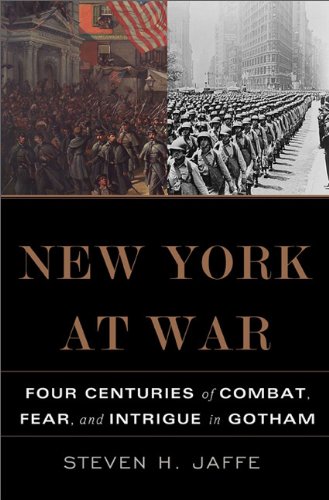Product desciption
New York At War Four Centuries Of Combat Fear And Intrigue In Gotham Steven H Jaffe by Steven H. Jaffe 9780465036424, 0465036422 instant download after payment.
In New York at War, historian Steven H. Jaffe offers an alternative history of New York City—arguably the most powerful and yet also the most vulnerable city on earth, and a place whose landscape, culture, and inhabitants have been shaped by violence near and far.
The threats of war to New York have not always been direct, but even distant wars have had an important influence on the city. Beginning with an Indian attack on one of Henry Hudson’s crewmen (who in 1609 became the first recorded fatality of an act of war in the region’s history), Jaffe describes, in turn, each of the city’s encounters with war over the past four centuries. He recounts the threats Dutch settlers faced from Indians (and each other) after the West India Company established New Amsterdam in 1624; the British encroachment and eventual invasion that transformed the Dutch town into an English colony in 1664; the colonial wars (such as Queen Anne’s War and the French and Indian Wars) that affected the city over the next hundred years; and the divisions and depredations New York endured during the Revolutionary War. The city soon experienced new threats (and became a major naval stronghold) during the Quasi-War with France and the War of 1812, which is now viewed as a second war of independence.
The nation’s newfound freedom did nothing to shield New York from the global conflicts that followed the Revolutionary War; in fact, New Yorkers’ sense of vulnerability persisted—and in many ways worsened—in the 19th and 20th centuries. Jaffe shows how New York became hugely powerful as the Union’s “money city” during the Civil War, but nevertheless retained strong economic and emotional ties to the South, and was so wracked by draft riots in 1863 that people suspected a Confederate plot was behind the violence. Many African-American New Yorkers were killed during the riots, highlighting the prejudice that has frequently characterized New York when the city’s inhabitants feel threatened.
Fear and prejudice have been bedfellows throughout New York’s history, says Jaffe—and the 1863 draft riots are hardly the only example of this sorry fact. During the build-up to World War I and the war itself, German-Americans were the subject of intense suspicion, which seemed to be confirmed by the discovery of several bombs planted by German saboteurs; one successful attack destroyed an ammunition depot in Jersey City and shattered thousands of windows in Manhattan. (Had New Yorkers learned of the Kaiser’s unrealized plans to invade the city after a massive amphibious landing on Cape Cod, the consequences for German New Yorkers would likely have been fare more dire.) New Yorkers of German, Japanese, Italian, and Jewish heritage encountered their fair share of hostility during World War II, and in the atomic era that followed the city endured attacks by terrorist groups such as the Weathermen, disaffected Bay of Pigs veterans, Puerto Rican nationalists, and Islamic fundamentalists. Each new assault has seen New Yorkers heap discrimination upon neighbors they perceive as being similar to the attackers. The challenge throughout the city’s history, says Jaffe, has been to distinguish spies, saboteurs, and terrorists from their seemingly identical but innocent neighbors—a difficult task, to be sure, but one whose complexity does not exempt New Yorkers or other Americans from the need to try.
Stretching from the colonial era to 9/11 and beyond, New York at War is that most rare of books: a work of history that is at once local and international, timely and timeless. Bringing a unique lens to bear on the world’s most celebrated and contested city, Jaffe reveals the unimaginable ways the city has changed—and how it has stubbornly endured—under threats both external and internal.


